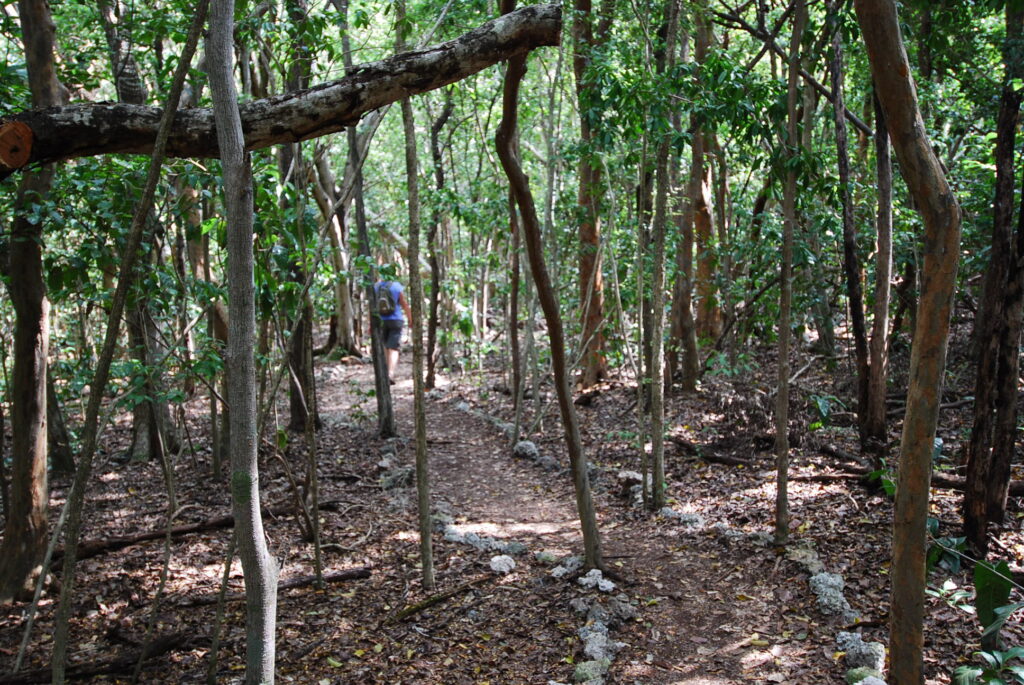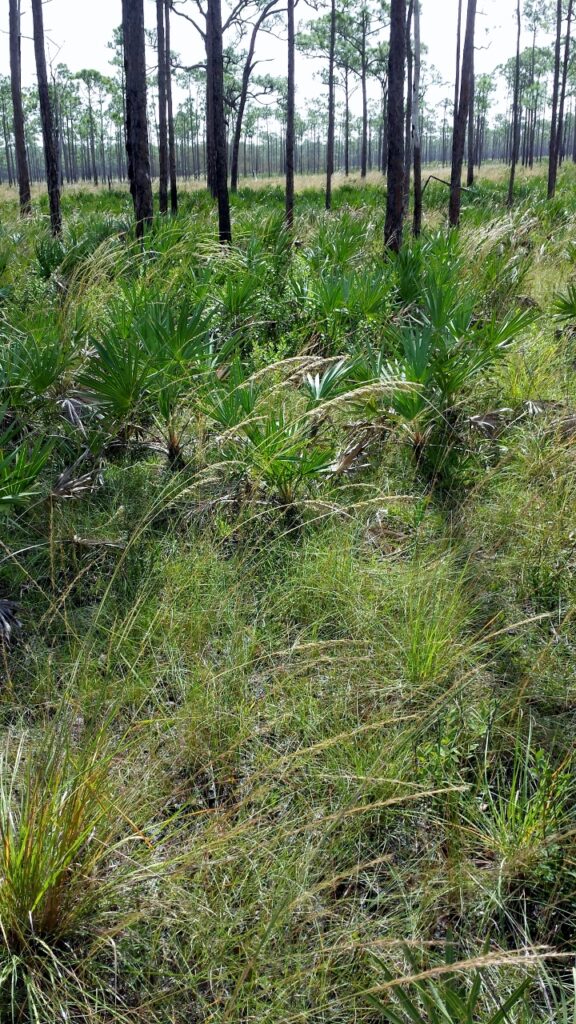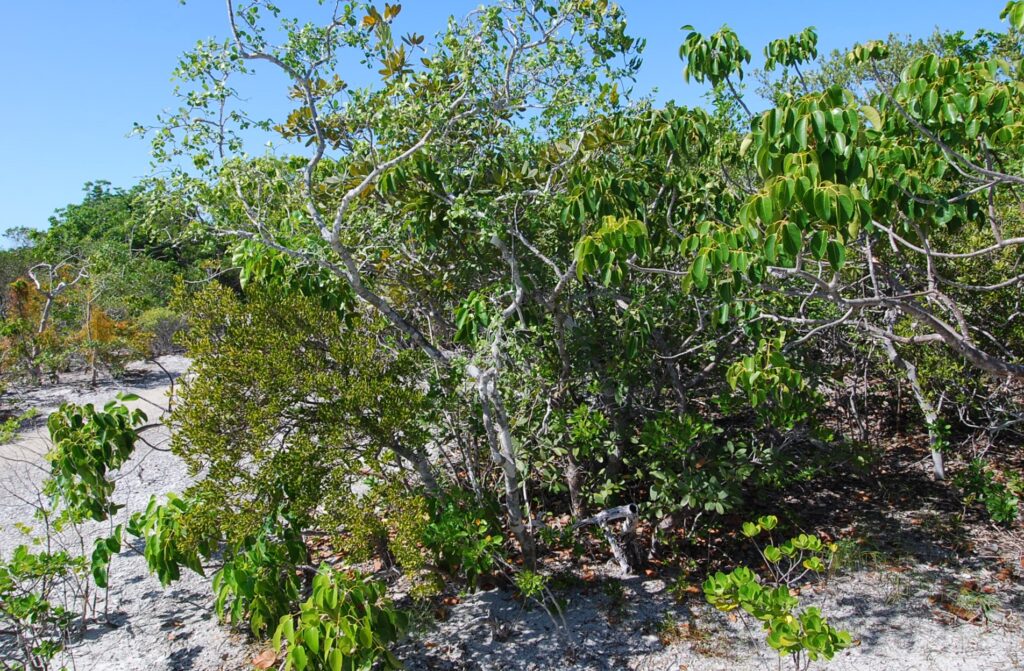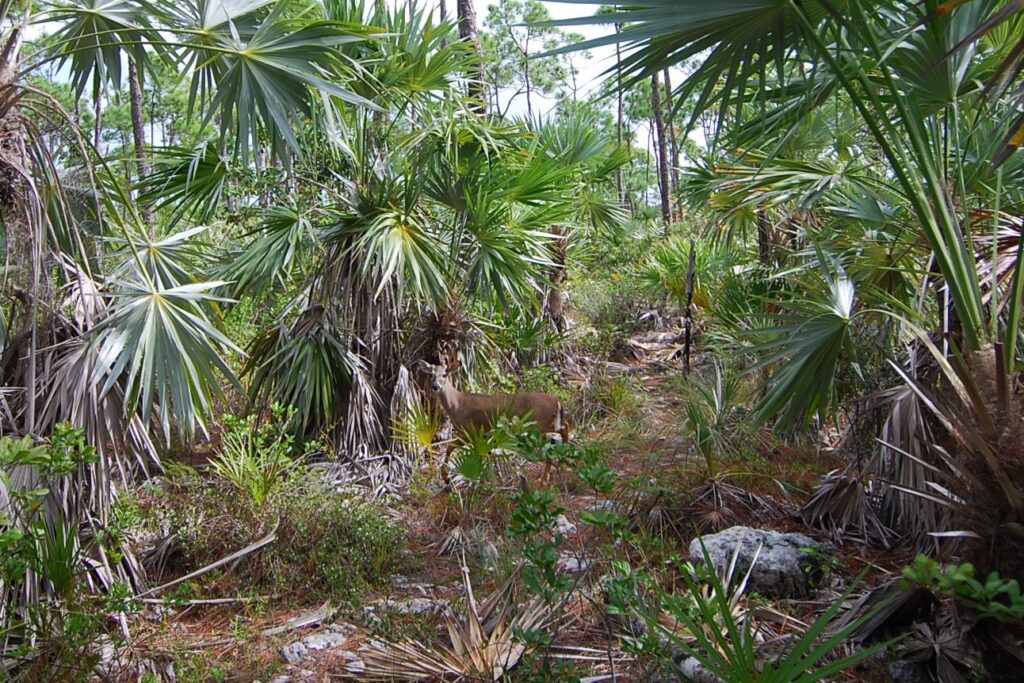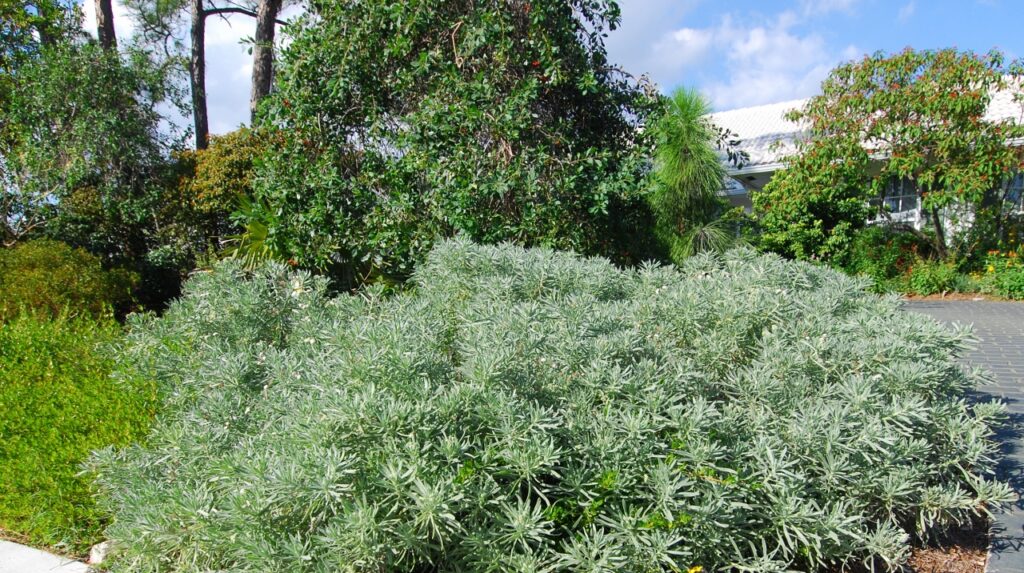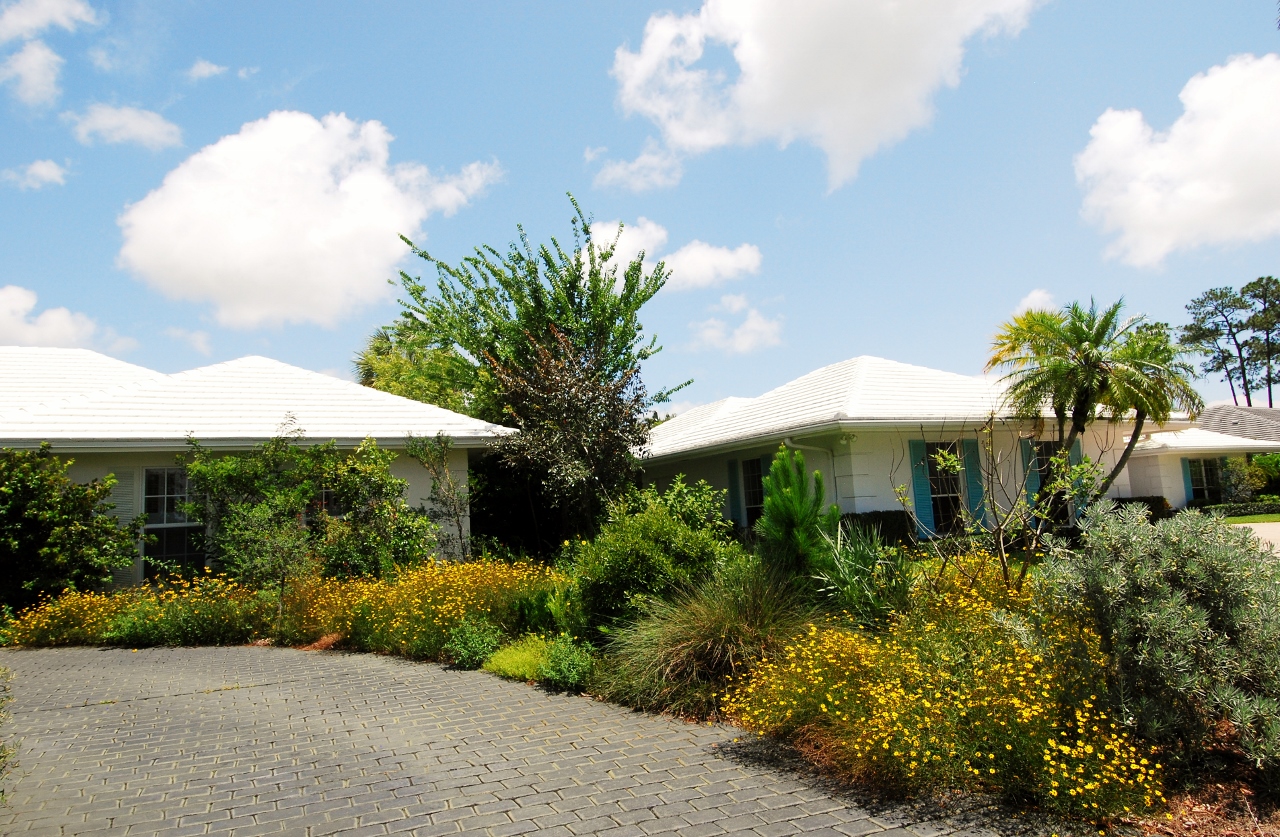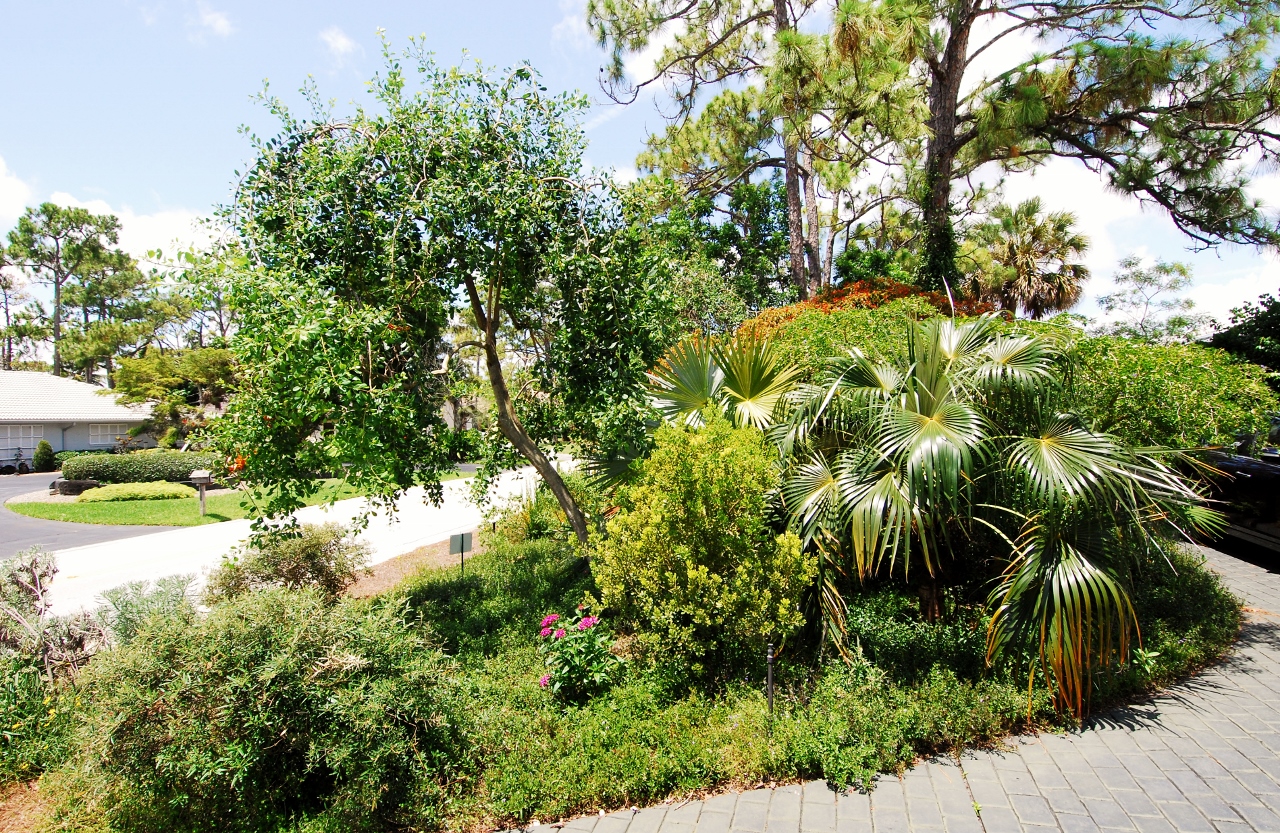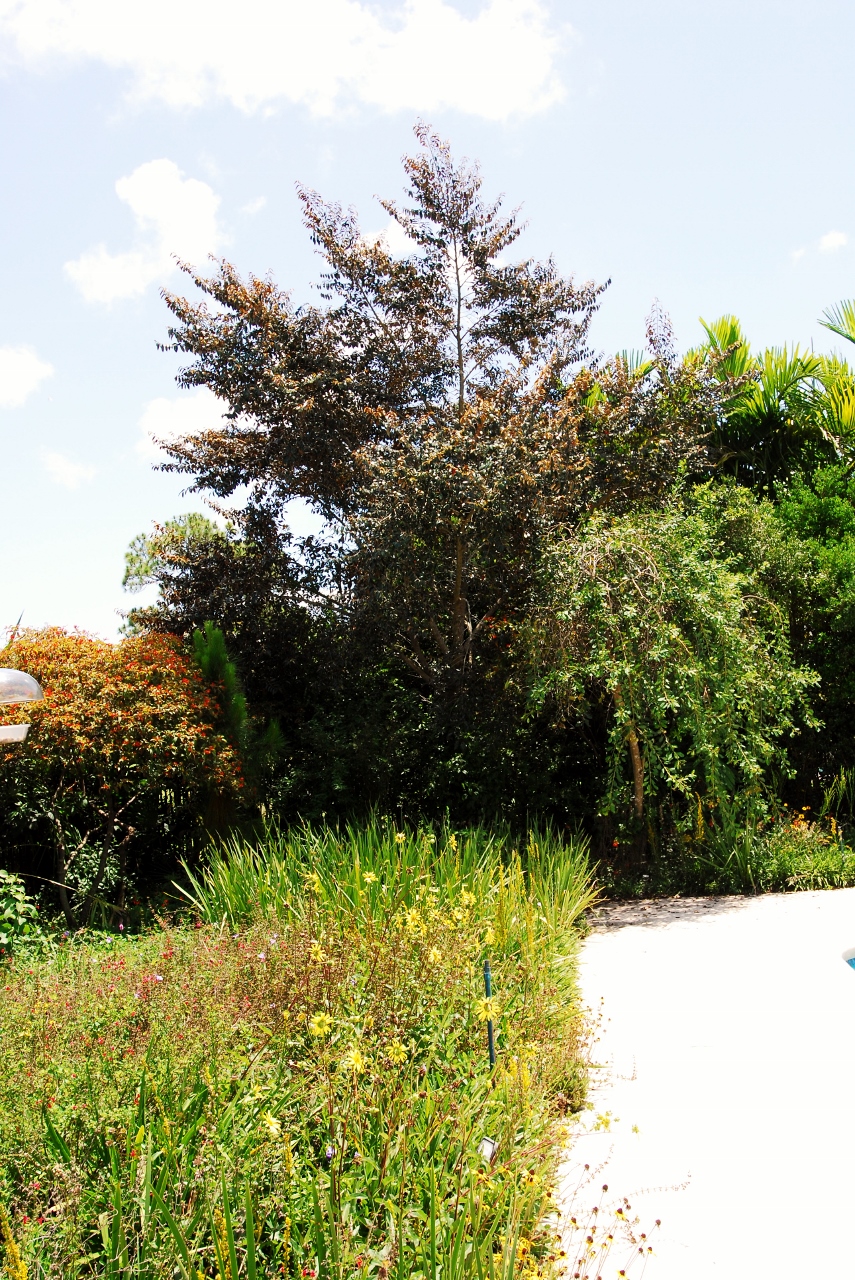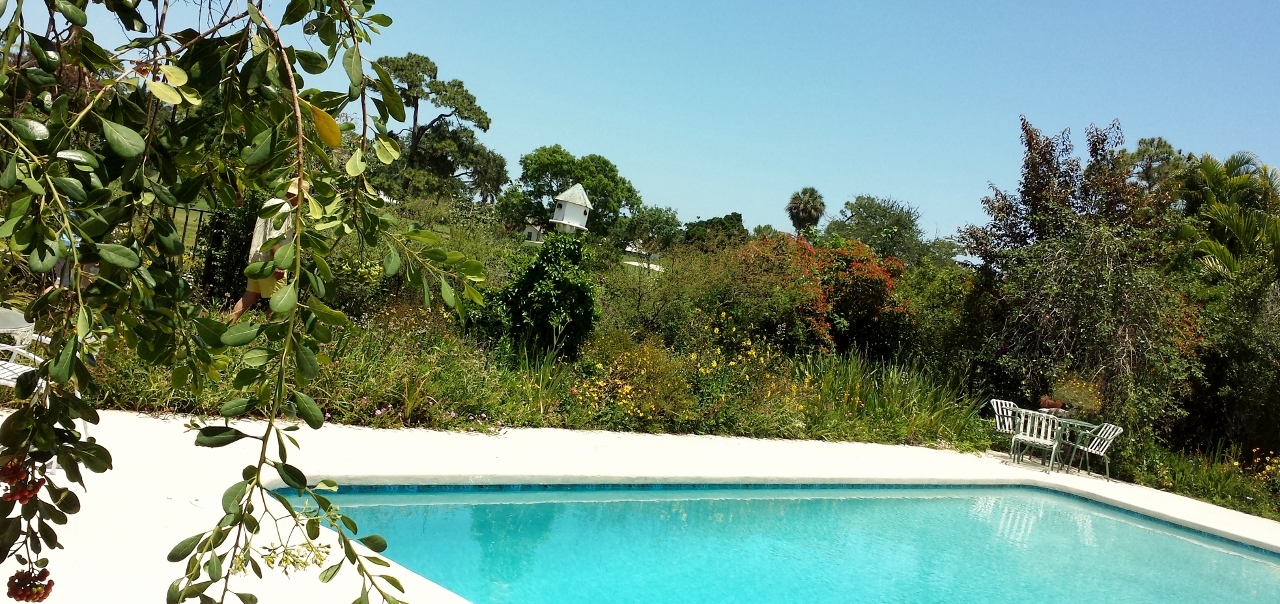The upper keys are packed with closely spaces trees with a wide variety of shrubs and groundcovers. When only a few feet apart, trees like the Gumbo Limbo, Wild Tamarind, Poisonwood, Pigeon Plum, Willow Bustic and Soldierwood develop straight trunks.
A group of Wild Tamarind, with their white bark and straight trunks, creates a mood similar to a grove of White Birch in Maine. The peeling bark of Gumbo Limbo and other mentioned trees creates a fascinating effect. You may notice that the larger trees are spaced 10 to 30 feet apart and will eventually dominate as the smaller ones are shaded out.
The Everglades Rocklands have soils composed of decayed leaves and broken down coral rock over ancient coral. The soil is acidic due to the organic matter, even though the coral rock is alkaline calcium.
This habitat is dominated by fire adapted Dade County Pine and numerous species of shrubs, ferns, wildflowers and grasses. Without fire, this would progress into a subtropical hammock composed of Gumbo Limbo, Mastic, Wild Tamarind and others.
Different species flower and seed throughout the year with the most colorful times during the summer rainy season and fall season of flowering and seeding grasses. The Lopsided Indiangrass shown in this picture flowers in September which is a great time to see other grasses and wildflowers blooming and seeding as well.
The tall tree in the center is Blolly with a Joewood to its left and broad leaved Poisonwood around it. These plants are surrounded by salt wind and water, nutrient poor soils and harsh sunlight. Hurricanes and violent storms beat these plants into twisted shapes that are truly beautiful to the trained eye.
Although a salt water bay surrounds this island, fresh water is trapped underground in the center. Short periods of salt water flooding are tolerated, yet fresh water is available most of the time.
If you would like a bonsai themed garden, combine these naturally occurring plants. There are also Black Torch, Wild Dilly, Bay Cedar, Key Lily, Locust Berry and Blackbead within this habitat.
A Key Deer in Big Pine Key that walked into the picture without my knowing. It is surrounded by Slash Pine, Key Thatch and Silver Palms, Coontie, Myrsine, Locustberry, Pride of Big Pine and other Rockland species.
I saw this darling daring deer when I looked up after taking a picture of the palms. Thinking she had walked in after my shot I tried, and thought I failed, to take her picture as she walked off. I was really disappointed until, while editing, I discovered that she had walked into the first shot without my knowing.
These Rocklands of the Keys and Everglades are full of many species of plants, insects and animals. These are our rock gardens where natural bonsai occur, including the Key Deer, and are some of the most beautiful and interesting places in the U.S.
Sea Lavender in Buffie’s Front Yard
The planting along the road includes Sea Lavender, Beach Creeper, Coontie and Pineland Croton. These Sea Lavender grew to this size in about two years. Yearly light pruning keeps them compact and full. The Beach Creeper can be sheered with a hedge trimmer once a year to 12 inches. It will stay compact and golden with this small amount of maintenance.
You may want to keep your ground covers a couple of feet in from the road and have mulch where you’ll stand while cutting and weeding.
Buffie’s Front Yard after Seven Years
You can see a pineland theme on the right with a small Slash Pine, Coreopsis, Muhly Grass, Saw Palmetto, Gopher Apple and overlapping Sea Lavender from the coastal front theme. As you go to the right of the house behind the Satinleaf there is a wetland theme.
This contains Florida Elm, Dahoon Holly, Swamp Dogwood, Myrsine, Water Hickory, Swamp Redbay, Coastal Foxtail and others. The native ferns covering the ground give this section a very woodsy feel similar to what you would experience in the Orlando area.
The Lignum Vitae, in the center between the palms, grew from four feet to this size in just three years. With watering twice a week and fertilization, this plant has grown into a specimen worth over two thousand dollars. Not bad for a two hundred dollar investment.
Buffie’s Front Yard at Seven Years
The Silver Palm, Joewood, Lignum vitae, Bahama Strongbark, Pineland Croton and Sea Lavender have grown in beautifully. The ground covers include Twinflower, Havana Scullcap, Quailberry, Coreopsis and a lone Penta, which is not native.
To the right and rear is a thick privacy screen of Firebush, Hercules Club, Black Bead and other shrubs. The whole area is alive with butterflies and birds all year long.
Buffie at Seven Years
Every year or two you will need to cut back and shape some of your plants. This is a more wild look which attracts butterflies and local and migratory birds including hummingbirds. There are bursts of color throughout the year as different plants flower and fruit. Although you can trim these plants the way exotics are shaped…why?
Buffie’s Yard at Three Years
Here you can see that the Satinleaf on the right is quite large. The wildflowers have grown in and some have been replaced. Patches of Prairie Iris cover the ground with blue green spears and will be full of three inch blue flowers from March to May.
It is time to cut back the Firebush and other shrubs and limb up the trees. Notice that their privacy from golfers and neighbors is complete.
